Completely rounded
The devil is in the details – something that also applies for the brand voice. We specify certain mandatory spellings so as to present the most consistent picture possible of KESSEL in our texts. Please observe the following rules whenever you write for our brand.
Brand name
The brand name KESSEL is always written in upper case letters.
If the brand name is used as part of a different proper name, for example in regional divisions or sub-brands, it is separated from the rest of the name by a space.
Refer to:
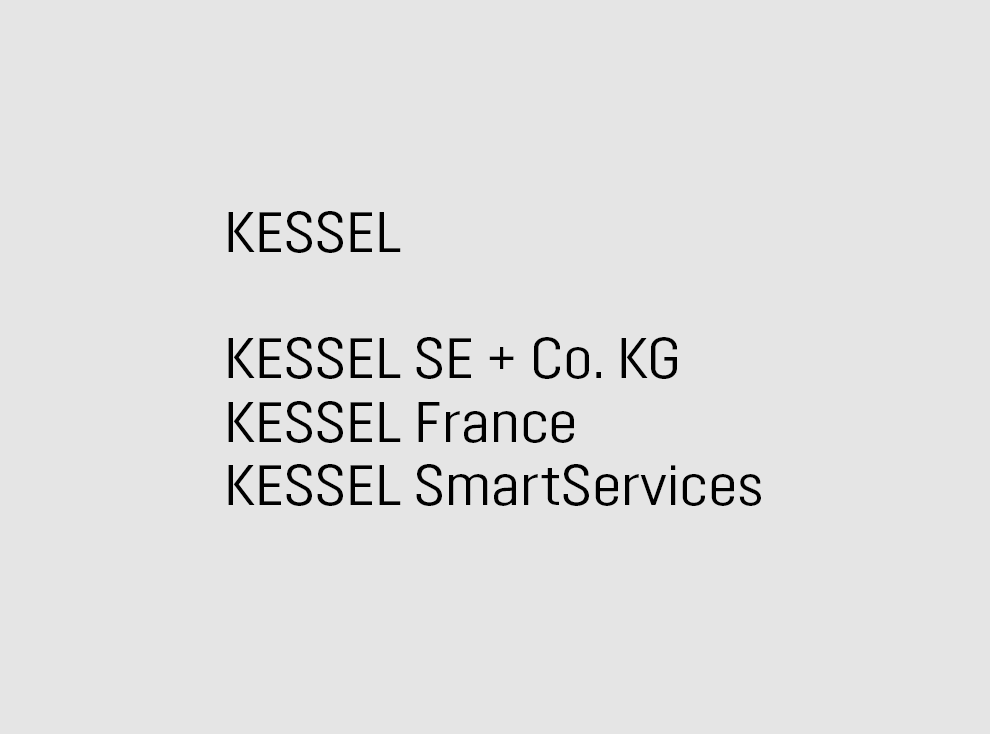
The brand name KESSEL is always written in upper case letters.
If the brand name is used as part of a different proper name, for example in regional divisions or sub-brands, it is separated from the rest of the name by a space.
Refer to:
Brand slogans
Standalone brand slogans such as the KESSEL claim and the quality promise “Made in Germany” are written without a full stop.
“mastering water” and “Made in Germany” are communicated uniformly worldwide in English – regardless of the respective market.

Standalone brand slogans such as the KESSEL claim and the quality promise “Made in Germany” are written without a full stop.
“mastering water” and “Made in Germany” are communicated uniformly worldwide in English – regardless of the respective market.
Product names
Names of products and/or product families are always italicised.
If the product type is not absolutely clear from the context, this is added to the name at the front (not italicised).
The product name is given a non-italicised suffix to indicate product variants.
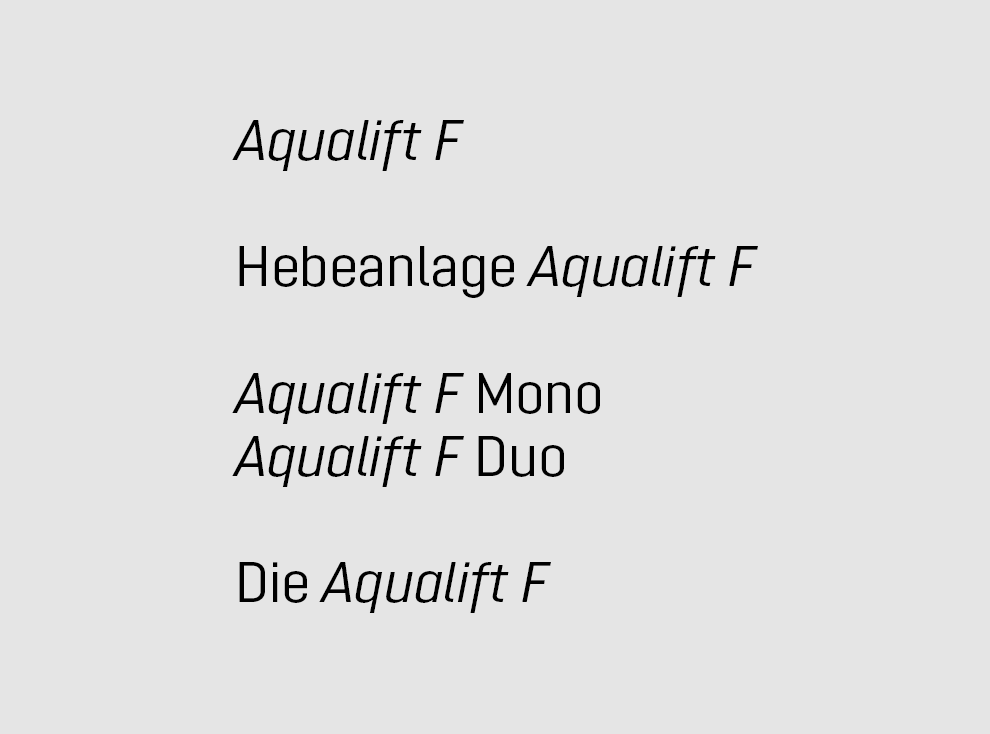
Names of products and/or product families are always italicised.
If the product type is not absolutely clear from the context, this is added to the name at the front (not italicised).
The product name is given a non-italicised suffix to indicate product variants.
Product classifications
KESSEL products are assigned uniformly to four fields of competence and the product categories these contain. The fields of competence and product categories each fall into at least one of our product areas “Water drainage”, “Wastewater treatment” and “Protection against backwater”.
| Field of competence | Product category | Water drainage | Wastewater treatment | Protection against backwater |
|---|---|---|---|---|
| BACKWATER PROTECTION | Backwater valves | |||
| PUMP TECHNOLOGY | Lifting stations and pumps, hybrid lifting stations | |||
| SEPARATOR TECHNOLOGY | Separators | |||
| DRAIN TECHNOLOGY | Drains |
Upper and lower case
The normal rules for upper and lower case apply for headings.
After colons or ellipses, continue with lower case letters (unless the first word is always written in upper case anyway).
Always continue writing in lower case after a dash.


The normal rules for upper and lower case apply for headings.
After colons or ellipses, continue with lower case letters (unless the first word is always written in upper case anyway).
Always continue writing in lower case after a dash.
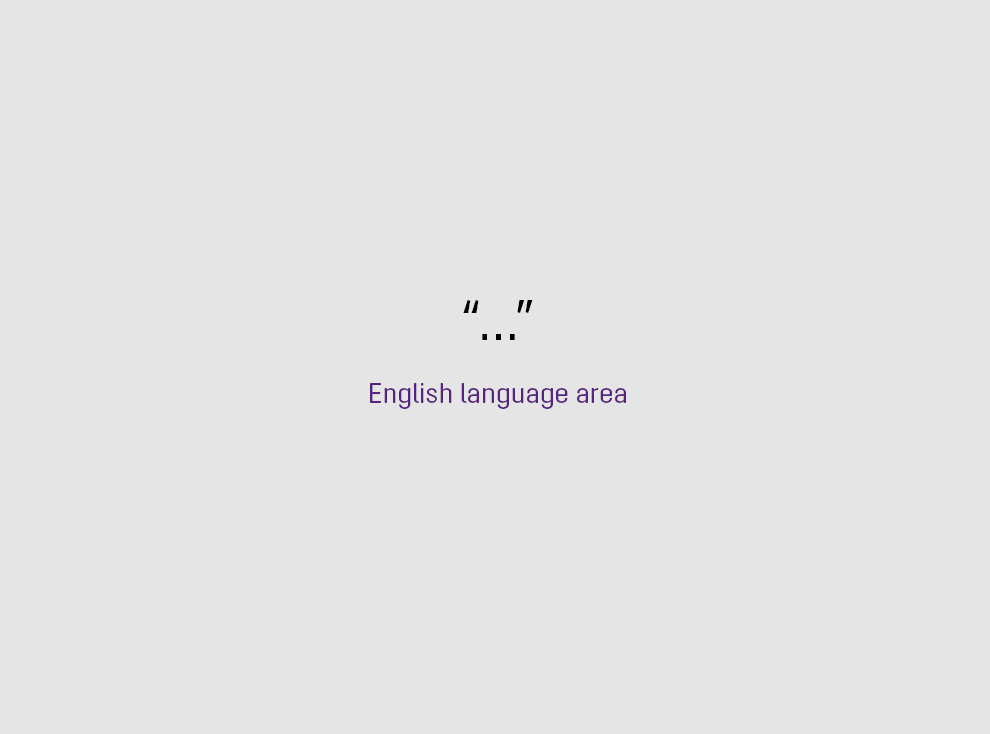
Use English quotation marks (“66/99”) in English language texts.
Numbers
In English-speaking areas, we use commas as thousands separators and decimal points as decimal separators.

In English-speaking areas, we use commas as thousands separators and decimal points as decimal separators.
Article numbers
Article numbers are split up into blocks of up to three digits, like numbers – but spaces are used instead of commas as thousands separators.
Article variants are identified by a letter that is added after the article number using a hyphen without a space.

Article numbers are split up into blocks of up to three digits, like numbers – but spaces are used instead of commas as thousands separators.
Article variants are identified by a letter that is added after the article number using a hyphen without a space.
Telephone numbers
The way telephone numbers are written is based on the system described here. All blocks, except for the extension, are separated by spaces.
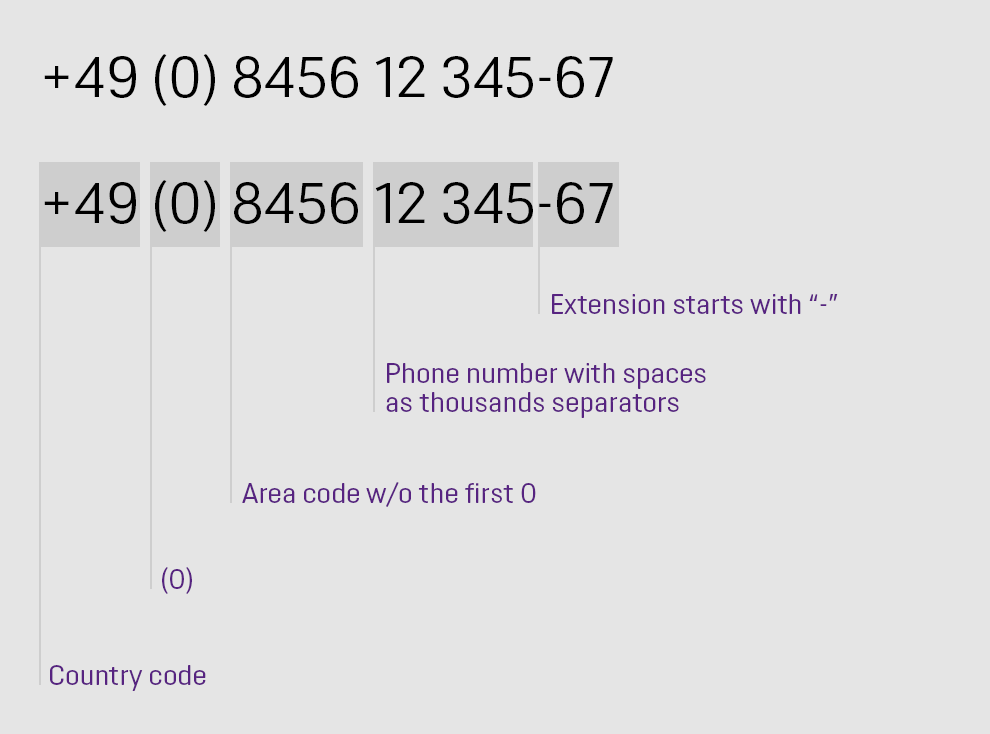
The way telephone numbers are written is based on the system described here. All blocks, except for the extension, are separated by spaces.
Units of measure & currency symbols
Units of measure for dimensions, weights etc. and currency symbols are always separated from the corresponding value by a space.
Only the percentage sign follows the numerical value directly with no space.
Less common units such as ppm for “parts per million” are explained to the reader appropriately (for example by writing them out in full the first time they appear).
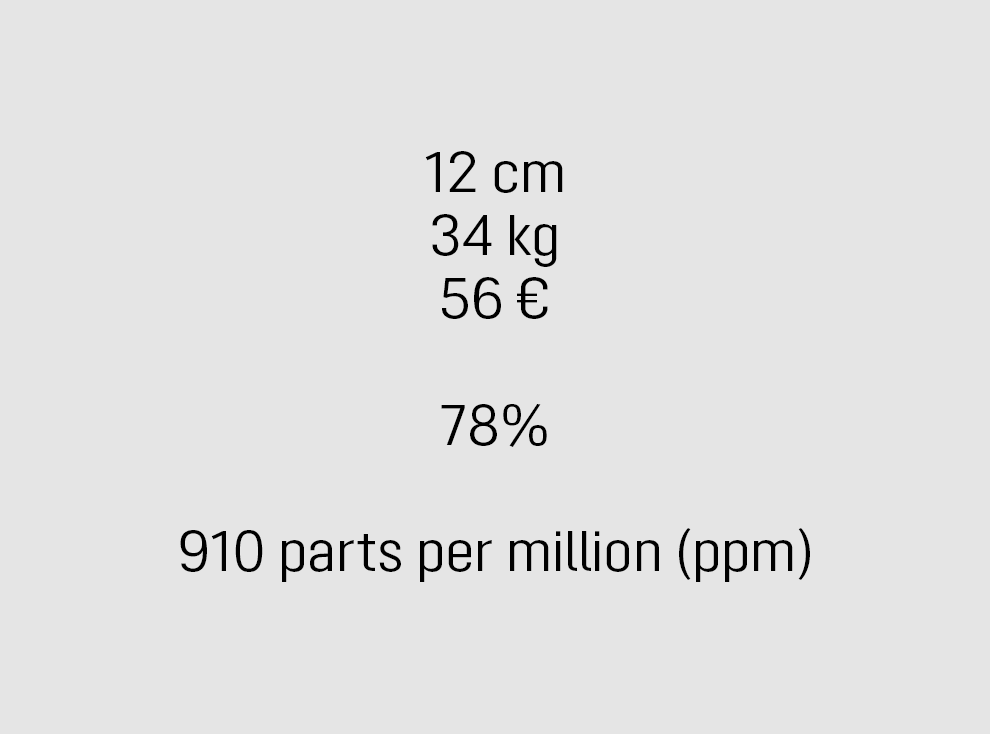
Units of measure for dimensions, weights etc. and currency symbols are always separated from the corresponding value by a space.
Only the percentage sign follows the numerical value directly with no space.
Less common units such as ppm for “parts per million” are explained to the reader appropriately (for example by writing them out in full the first time they appear).
Hyphens and dashes
Hyphens and dashes (“-” and “–”) are used correctly in continuous texts: hyphens, for example, for word division, dashes to split sentences orthographically.

Hyphens and dashes (“-” and “–”) are used correctly in continuous texts: hyphens, for example, for word division, dashes to split sentences orthographically.
“And” v. “&”
The word “and” is always written out in full in continuous texts (except in proper names with an ampersand).
The ampersand “&” may be used outside continuous texts to abbreviate texts or improve their style.

The word “and” is always written out in full in continuous texts (except in proper names with an ampersand).
The ampersand “&” may be used outside continuous texts to abbreviate texts or improve their style.
Slashes
If a slash is used to separate two individual words or numbers, it is written without a space.
If at least one of the separated terms is made up of several words, the slash is written with spaces.

If a slash is used to separate two individual words or numbers, it is written without a space.
If at least one of the separated terms is made up of several words, the slash is written with spaces.
Final remark:
Please make sure with all English texts that British English is used instead of American English.
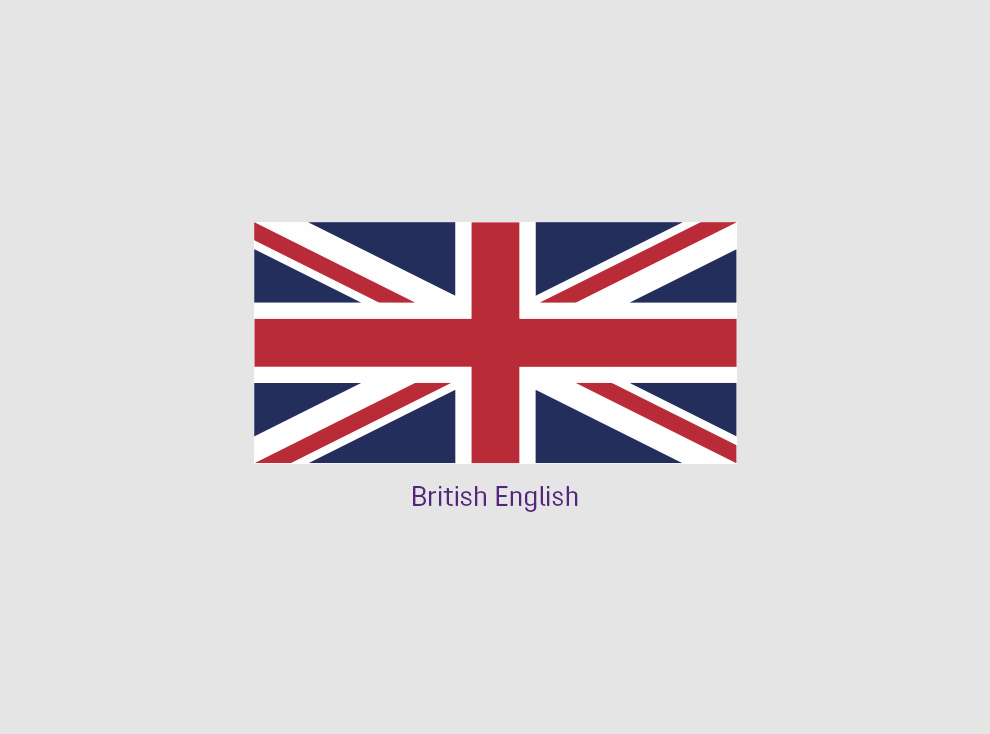
Please make sure with all English texts that British English is used instead of American English.


